Back in 2012, Alexandria Ryahl wrote a piece for Portable.TV (now defunct, but preserved by the Wayback Machine) blasting Gilmore Girls for their portrayal of teenage life and academia through the Rory character. I originally wrote a (rather lengthy) comment on the site, which did not go through, and decided to expand on my thoughts on an old blog of mine. Inspired by my recent dive into the Gilmore Guys podcast and my continuing obsession with the show, I’d like to revisit some of my previous comments on both Rory and the themes ingrained in Gilmore Girls‘ seven season run.
For those unfamiliar with the show, well, do yourself a favor and get familiar with it. It’s witty and addictive and a hallmark of the early 2000’s drama, though it most certainly has its faults (the biggest of which is the seventh season). The entire show is available on Netflix as of October of 2014 and it will see a four-episode Netflix reboot with Amy Sherman-Palladino back at the helm due this November.
Gilmore Girls spins around Lorelai Gilmore and her daughter, Lorelai Gilmore (Rory). Their mother-daughter/best-friend relationship drives the show as it alternates between their individual and intersecting plotlines. The basic premise is that Lorelai got pregnant at age sixteen and ran away from her family’s home shortly after giving birth, raising Rory away from her rich, upper-class parents, Emily and Richard; the show opens with Lorelai and Rory sixteen years later and follows the latter from the middle of high school through her college graduation.
Rory’s life is easy for teenage girls to envy: best friends with her mother, brilliant, pretty, and universally worshiped by every family member, townie, and boy she dates. She’s an avid reader and consumer of movies (and junk food), as encouraged and adored by Lorelai. And Rory enjoys quite a bit of privilege through the course of the show, which can build the unrealistic expectations that Ryahl mentions. But it’s precisely the function of that privilege that’s at the heart of Gilmore Girls, and how that privilege affects the lives of the show’s (primarily female) cast.
I’d also like to enter a few corrections into the mix, because I’m me and I can’t let misinformation about Gilmore Girls run free, while I address Ryahl’s major complaints.
Post-Application Anxiety
Firstly, Ryahl’s article erroneously states that Rory applied only to Harvard and Yale. Strife over Rory’s college plans flows through the first two seasons of the show and comes to culmination in several episodes of the third season, at which point Rory is applying to and deciding upon her university. While Harvard and Yale were Rory’s only serious considerations, we learn (along with Lorelai) in “A Deep-Fried Korean Thanksgiving” that Rory applied to more than just Harvard — Yale and Princeton are explicitly mentioned, along with other “backups.” It’s hard to imagine that Rory, practical and humble, wouldn’t string herself a safety net in the event that her Ivy League plans fell through.
Rory’s impressive college acceptances can be hard to swallow based on the prestige of the schools fighting over her, but let’s look at what we know: Rory is valedictorian of a respected preparatory school, a talented writer, active in extracurriculars, and comes from an old money family. The long line of Yale graduates in the Gilmore clan alone make Rory a shoo-in for Yale at least, especially considering Richard’s continued participation in the alumni network and his generous donations. The Gilmores may not have a history at Harvard, but Rory obtains personal endorsement from a Harvard alumnus in “Application Anxiety,” and her aforementioned qualifications are nothing to sniff at, either.
Only one detail bothers me about Rory’s college applications (and acceptance), and it has nothing to do with the number or the quality of the schools. It’s Paris.
In “The Big One,” Rory’s frenemy Paris breaks down on public television broadcast after being rejected from Harvard. The rejection comes despite her family’s history at the school and her impressive grades (which closely rival Rory’s; Paris is eventually named salutatorian). Paris is also a talented writer and her list of extracurricular activities almost definitely blows Rory’s out of the water, as seen in “Hammers and Veils.” It’s baffling to think that Rory was accepted and Paris wasn’t, even if Rory had a slight academic edge (but let’s also remember that Paris has been in prep school her whole life, whereas Rory transferred out of public school as late as the 10th grade).
Paris cites her downfall as her Harvard interview.
This scene rationalizes Paris’s rejection for me — because without it, it simply doesn’t add up. Paris’s application could easily have been sitting in the accepted pile until she verbally assaulted the interviewer, who in turn tossed her out. Rory, by contrast, had no interview mentioned, and if she did, she’s polite and personable, if timid; certainly not at Paris’s offensive caliber. Once again referring to “Application Anxiety,” Rory has the perfect, shiny “Harvard hair” — she’s practically tailor-made for the Ivy Leagues, with her private school education, privileged family name, and high grades.
Reading is Sexy
Another shot against Rory is how she seems to magically attain high grades in demanding courses.
Rory spent more time on screen making obscure movie references than she did studying, which doesn’t seem like the typical behavior of a private school student. And more importantly, how did she find time to read all those damn books? … the show’s creators chalked up her success to Rory being practically perfect in every way, an idea repeated so frequently on the show that it starts to feels as if it’s being shoved down your throat. Rory finished all her homework weeks in advance, giving her time for fun activities like reading Russian literature, ingesting large amounts of marshmallow fluff, and having several stupidly good-looking boyfriends.
It’s a fair point; Rory seems to have discovered thirteen or fourteen hours more hours in a day than the rest of us mortals enjoy. But the show does make an effort to at least put a book in Rory’s hands (or bag) rather often, or to show her reading on the couch or working at her desk. In “Hammers and Veils” Rory must juggle her academic commitments with her relationship to her then-boyfriend, Dean (though Dean’s complaints about being overlooked may have a little to do with his being a creepo stalker), and in the fourth season Rory breaks down when she’s unable to handle her class load during her first semester at Yale.
Rory’s time management skills and efficiency may be inhuman, but we’re never lead to believe she hasn’t worked for and earned her grades. In “Afterboom,” for example, Rory confronts her professor about a grade because she doesn’t feel she earned it, proving her academic integrity. The show makes enough of an effort to legitimize Rory’s grades and to humanize her that we, the viewers, can suspend our disbelief; Rory’s studying takes place off-screen and is referenced enough to not cause much concern.
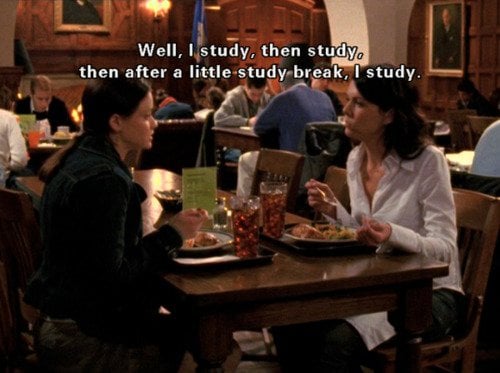
If one attempts to interpret Gilmore Girls as an accurate portrayal of real life, they’re going to have to grapple with a whole lot more than the time (or lack thereof) that Rory spends studying despite her academic success; how did Lorelai, after saving the money she made working as a maid for a few years, afford a two bedroom, two bath home in small-town Connecticut? (Note: The Gilmore’s downstairs bathroom is occasionally referenced but doesn’t seem to actually exist anywhere in the home — another impossibility of the show.) How can she and Rory afford to eat out two, three times a day? How do they afford their wardrobes? Why are Rory and Lorelai not spending four or five hours per day in the bathroom, given the amount of coffee they drink? Why do most of the town events, which we’re told are yearly traditions, happen only once in the show? Why don’t Rory’s feet turn into frozen hunks of flesh when she runs home barefoot in the middle of winter after falling asleep at Miss Patty’s?
The entire show seemingly happens in some kind alternate universe, and it’s up to the viewer to separate it from reality. Gilmore Girls isn’t pretending to be a hyper-realistic portrayal of student life or the world we all inhabit, but the central conceit of the show functions enough that we have faith in Rory as a dedicated student.
Gilmore-isms
Gilmore Girls brims with pop culture references, to the point where collections of the DVDs feature handbooks to every book, movie, television show, musical artist, or other neologism in the show. The handbook comes in handy (yikes), as many of the references are incredibly obscure; the Gilmore Guys podcast does an excellent job of pulling out some of the show’s most bizarre references, one of them being to a 1960s soap opera. Ryahl takes issue with Rory’s participation in the reference-laden banter of the show, because as a dedicated student, she shouldn’t have the time to watch things like Peyton Place. Or have any interest in watching Peyton Place.
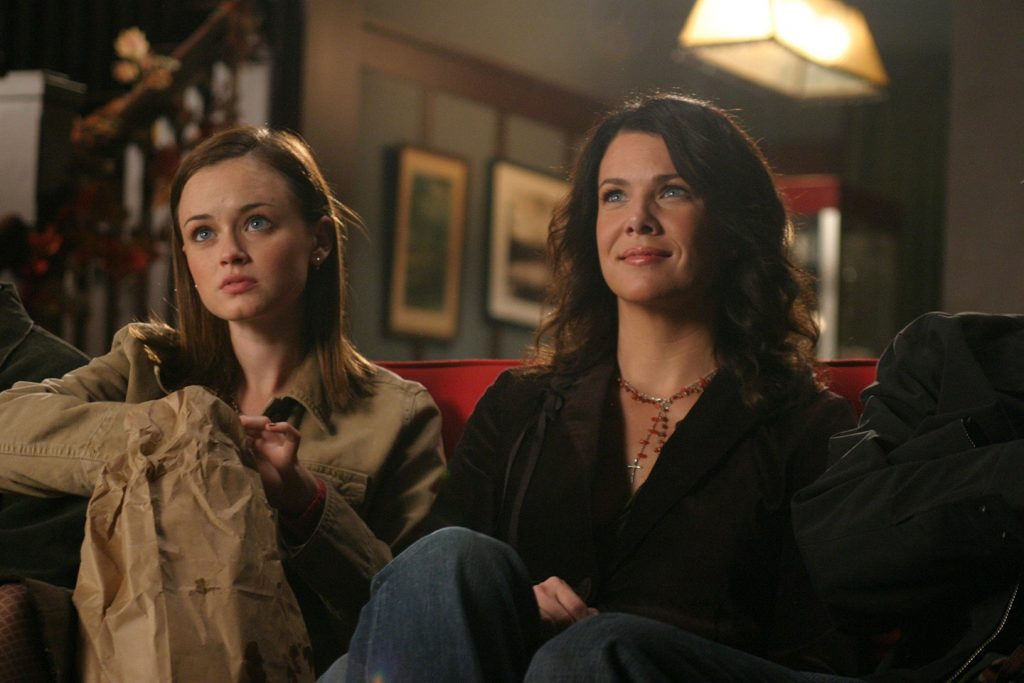
Again, we must take a deep look at the show’s dialogue and nuanced usage of pop culture references, which create a sort of language for the characters. Each reference is specific to the character behind it. Lorelai, for example, usually references 80s celebrities and culture, because that’s when she was a teeanger; Lane usually goes for musical references (for obvious reasons). And how the characters react to other references is important, too, in building both the individual characters and their relationships. Sookie and Lorelai, who are close in age, bond over references to their teen years: in “The Festival of Living Art,” the two women weigh-in on the great Andrew McCarthy/Emilio Estevez debate that I guess someone somewhere in the world was having in the late 1980s (Sookie concludes that “they’re both dogs”). But when Lorelai pulls out similar material with Rory, the two experience Pop-Cultural Osmosis Failure, and the reference falls flat. Looking at “The Breakup Part II,”
Lorelai: What are all these people doing up? It’s Saturday morning.
Rory: Some people like getting up early.
Lorelai: You lie.
Rory: No, they do it voluntarily.
Lorelai: Really?
Rory: Every day.
Lorelai: Ha! Jumpback!
Rory: Excuse me?
Lorelai: Kevin Bacon, Footloose, reaction to the no dancing in town rule as revealed to him by Chris Penn, brother to Sean, sage to all.
Rory: I should have known.
Lorelai: Yes, you should. I don’t know what they teach you in that damn school.
These scenes may serve to illustrate Lorelai’s quirkiness more than Rory’s comparatively lesser media consumption (or at least, her lack of Lorelai’s attachment to the 1980s, as Rory reached consciousness at the tail end of the decade), but Rory is rarely the one to pull out references to old TV shows and movies (unless they’re classics or favorites of Lorelai’s). Her jokes typically reference 90s sitcoms, books, and politics, all of which are plausible interests for her character (she admits, shamefully, that she liked Saved by the Bell, which aired when she was a child). Her deep cuts into the era probably stem from attempts to emulate Lorelai, to fit into Lorelai’s crazy little world, or are simply byproducts of her relationship with Lorelai: Lorelai shared the culture she loved with her daughter as she raised her.
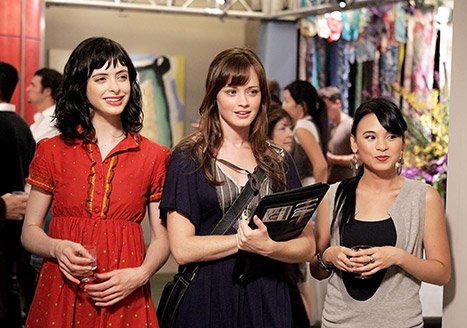
Further, Rory is often implied to be a bit of a shut-in. Through the show her only close, non-familial and non-romantic relationships are to Lane (who, from the fourth or fifth season on, gets shafted in her appearances in Rory’s life and the show) and to Paris (sometimes). The writers behind the show seemed to realize this in Season 7, which doubled Rory’s friend count when they introduced Lucy (Krysten Ritter) and Olivia (Michelle Ongkingco). All of Rory’s other relationships are to her family (which is fine), her boyfriends (who are all awful), or the townies (and other superficial characters, like Madeline and Louise). At the very least, for the 16 years that precede the show’s opening, Rory had two significant relationships in her life: with her mom and with Lane. A girl like that probably spent her fair share of time in front of the television.
No men, just lots of Chinese food.
Rory and Lorelai’s superhuman eating skills are a point of interest for critics and fans of the show alike, Ryahl included. Between Friday night dinners, visits to Luke’s, movie-nights, and bumming around the house, the volume of food consumed on this show reaches absurd levels. The majority of the show’s action and drama actually happens around some sort of meal, upon reflection. Thankfully, the characters acknowledge their massive consumption and frequently make comedic nods to it, none more than in “A Deep-Fried Korean Thanksgiving,” where Rory and Lorelai juggle a number of Thanksgiving dinner commitments. Other times, the camera pans over a collection of candy even the most successful of trick-or-treaters would marvel at. Their eating habits are a gag played entirely for laughs. It’s not meant to be believable.
From a gendered perspective, it’s a refreshing, too, to see female characters who actively, even obsessively, eat. Gilmore Girls might not have the daring to challenge ideals of beauty (though Sookie is never the butt of jokes for her weight) — Rory and Lorelai maintain their svelte figures despite their lack of exercise (the Marsha’s Vineyard episode didn’t happen) — nor does it encourage healthy habits, but at least the girls get to eat.
“‘The Great White Hope’ of the Gilmore Clan”
The show and its characters undoubtedly idolize of Rory, an integral complaint Ryahl levies against the show. Lorelai, Christopher, Luke, Emily, Richard, Dean, Jess, Logan… the entirety of the show’s cast adores the girl. According to Ryahl, the why seems fuzzy: what’s so great about Rory? She’s essentially a less-witty, brainy version of Lorelai. Characters wax poetic about how compassionate she is and we’re bombarded with the idea of angel Rory ad nauseam. Only Michel takes any sort of issue with her, but when he does it’s for comedic effect; Michel takes issue with everything. He’s weird for not worshiping at the altar of perfect, precious Rory.
And that’s definitely a problem with the show. Shows must endear viewers to their characters, not tell them to like characters. Further, characters need to stumble, to have flaws, in order for viewers to like and sympathize with them. Most of Rory’s dilemmas stem not from issues with her or mistakes made by her, but by the failings of the people around her: Christopher’s absence in her life, Jess’s angst, Logan’s frat boy behavior. Contrasted with Lorelai, whose childish behavior and inability to commit lands her in trouble, Rory seems to have zero personal imperfections, besides perhaps her allowing men like Jess or Logan into her life.
Rory doesn’t get a happily ever after.
At some point the writers must have noticed this, too, because Rory’s plotline in Seasons 5 and 6 revolves around cracking her perfect veneer. She loses her virginity to her now married ex-boyfriend, her fear of failure leads her to drop out of Yale for a semester, and she joins Logan in his lifestyle of drinking and partying (and committing felonies). Along the course of the show, most viewers find something to like within Rory (though she’s rarely a fan favorite — that trophy is usually stolen, rightfully, by Emily or Lorelai). Some of these plotlines may not have been particularly well-executed, but Gilmore Girls does responds to Ryahl’s problem with the show through them: girls may like and want to be Rory, but it becomes clear that Rory’s life isn’t all peaches and cream. Whether it’s handling her course load, learning to say “I love you,” falling into unhealthy habits, or dealing with the pressure to be successful that her family places on her, Rory does face adversity. And, by the show’s finale, Rory doesn’t get a happily ever after. Her longtime boyfriend ditches her after she rejects his marriage proposal, she doesn’t get the New York Times fellowship she wanted, and she graduates college without a steady career lined up. Sure, that’s not so bad placed in comparison with the situations other young adults face, but she does encounter bumps along her road, and her privilege is a vital (and intentional) part of the show.
Pride, Privilege, & Prejudice
Which brings me to my final defense of Rory and Gilmore Girls: it is, at heart, a show about how privilege and family function together. The show’s main cast each hail from a very different socioeconomic background and status, and much of the show’s plots and drama stems from them navigating their individual worlds and relating to (or not relating to) others based upon their respective status. The anachronisms and sometimes fantastical portrayal of life coat the show, but at its core, it tells a very human, nuanced story about the role of class status and pride in familial relationships.
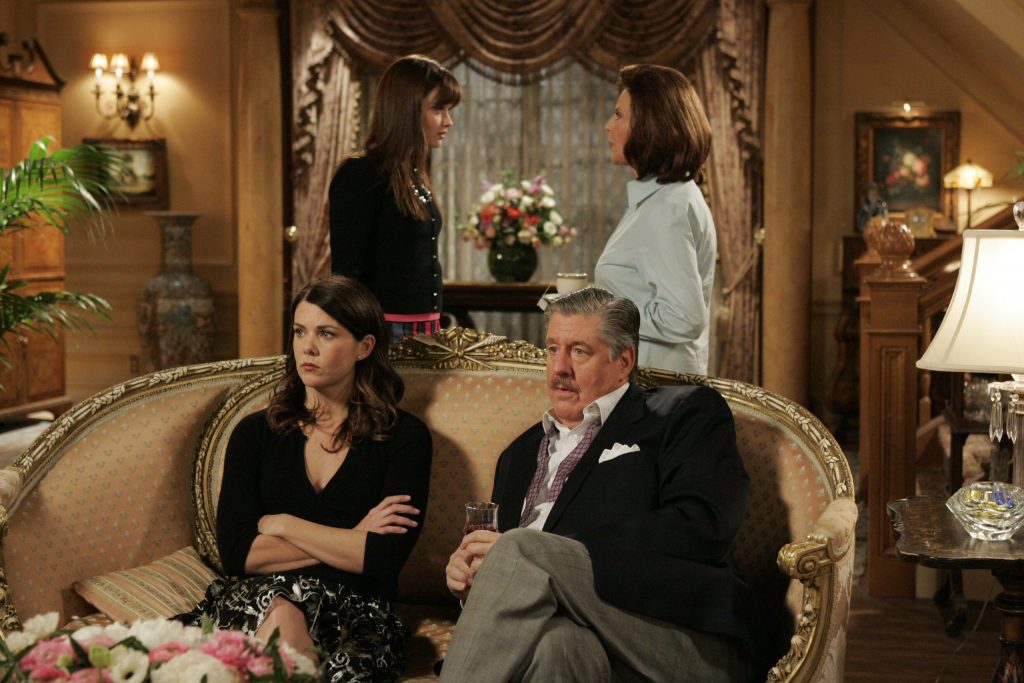
Emily and Richard, of course, embody the world of privilege: the world of Ivy League schools and charity dinners and where, Lorelai jokes in “Dead Uncles and Vegetables,” “Bentleys are for losers who can’t afford a Rolls.” Lorelai was raised in that world, but eschewed its culture from a young age and fled it as a teen; she raised Rory in the antithesis of it, where Pop-tarts and pizza make up an acceptable, nutritious meal and trashy TV is entertainment on par with symphony orchestras. Lorelai’s rejection of their lifestyle is perhaps the main source of strife in her relationship with her parents. She has no meaningful relationship with her father, and Emily cannot understand why Lorelai would prefer her chosen life to the world of privilege that she offered. Emily sees Lorelai’s repudiation of it as a repudiation of herself, and she’s not entirely wrong; their challenge, especially in the last season, is reconciling and mending that gap.
As Rory is gradually exposed to that same world Lorelai left and sheltered her from, she starts to adapt parts of it, to Lorelai’s discomfort, symbolized none better in Rory’s relationship with trustfund baby Logan. At best, Lorelai is hesitant to approve of Logan and his influence on Rory’s life. Emily, thrilled with the match, accuses Lorelai of disliking Logan merely because he’s rich in “How Many Kropogs to Cape Cod?” during the fifth season. While Lorelai certainly has some class biases, she objects because she sees what Logan’s world of privilege is doing to Rory and fears the path she sees her daughter going down — a path that eventually leads Rory to steal a yacht with Logan and stop talking to her mother for several months. Lorelai and Rory’s relationship therefore isn’t picture-perfect; it’s plagued by their different lifestyles and the consequences of Lorelai’s past choices. Through the course of the show, it bobs along a kind of rollercoaster, as they must navigate Rory embracing the world Lorelai abandoned.
Gilmore Girls grounding a commentary and exploration of privilege in something as close and personal as family is pretty exceptional and, arguably, where the show is at its strongest. No scene featuring the ladies and their boyfriends or husbands emotionally resonates or hits harder than when Emily gets to be tender and motherly towards Lorelai, when Emily asks Lorelai’s surrogate mother Mia for photos of when Rory was a baby, when Emily and Lorelai desperately search for a way to bond that works for both of them, when Lorelai and Rory are reunited after months apart, when Lorelai reassures a distraught Emily that she didn’t “lose” her, when Rory tells Lorelai that she is “everything” to her. Okay, most of those are about Lorelai and Emily, not Lorelai and Rory. But Rory is the glue that brings and binds the two back together. She’s essential to the show’s function and her seeming perfectionism supports that… that is, when the show and viewers aren’t busy dissecting it.
Of course, the show fails to extend that commentary to other extensions of privilege, like race or sexuality — people of color and LGBTQ people are invisible and, in the case of the latter, occasionally derided in the show. Still, the title of the show names a fairly clear mission: to delve into the lives of three women in their mother-daughter relationships. It does so in the context of money, but never suggests greed — instead, it’s concerned with the emotional nuances of those relationships and the barriers the characters must deal with because of class. Viewers want to see those barriers shattered — to see Lorelai and Emily finally reconcile, with Rory as a kind of middle-woman and buffer between them, as she has one foot in Emily’s world, the other in Lorelai’s. But, while watching the show, we constantly question whether it’s possible. Are the walls between Emily and Lorelai too high to surmount? Is the weight of the past, and each woman’s fiendish devotion to Being Right and espousing the superior lifestyle, too heavy?
The show never gives us answers to those questions, though its finale leaves viewers with hope. They make up the constant push-pull of the show, which Rory is integral to both creating and sustaining. Ryahl ends in a positive place, concluding that it’s unhealthy for young women to measure themselves by the unrealistic standards that television and media place upon us. But if Rory’s example is to be studious and to achieve, well, I don’t think she’s the worst role model a girl can find, and her relationships with her mother and grandmother teaches young women to value those people, if they are lucky enough to have them in their lives, and even if the two are flawed. Gilmore Girls could be categorized as science fiction if we look at the accuracy of its portrayal of life in Connecticut in the early 21st century, but that’s why we must critically consume media, and why we must teach our daughters, especially, to do so as well. Under the surface of the characters’ weird eating habits, pop culture literacy, and superhuman achievement lies a show that wholeheartedly concerns itself with the relationships between women. That’s something rare on television today, even almost a decade after the show’s cancellation, and the hurt and separation that besets those relationships is absolutely real.
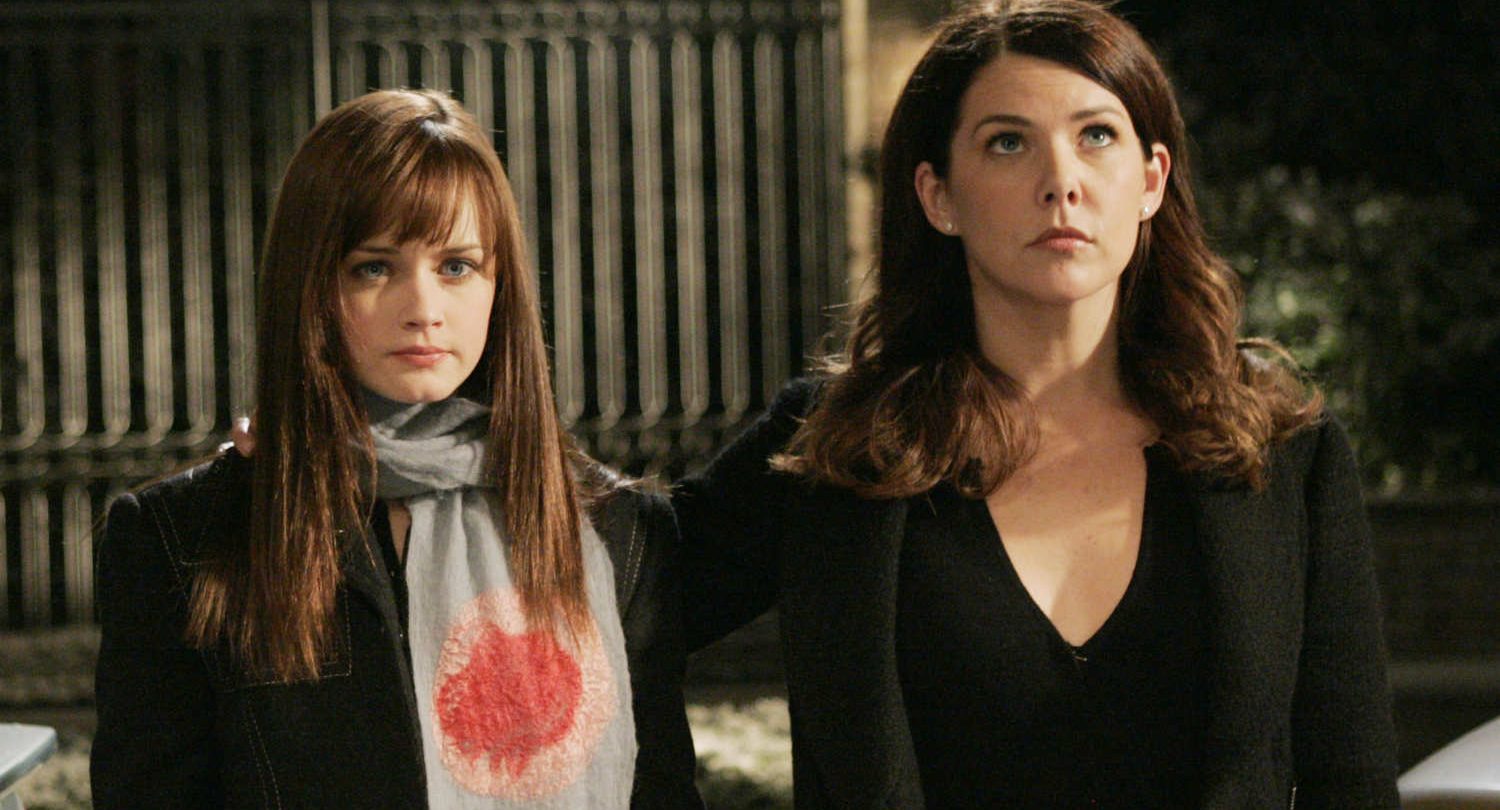
Leave a Reply